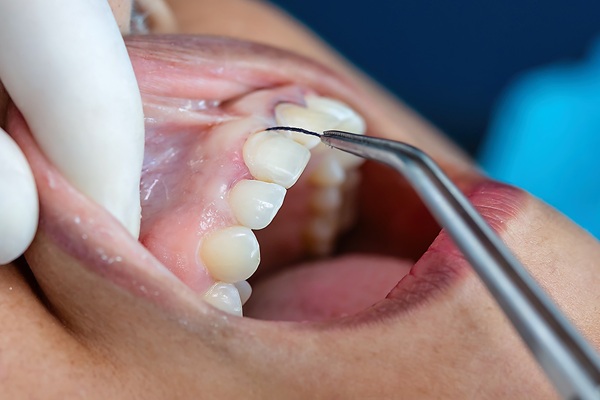How Dental Surgical Implants Fuse With Your Jawbone

To replace missing teeth, you may have considered surgical implants as an option. When compared to dentures or dental bridges, dental implants offer several advantages, including increased comfort and longer-lasting results. However, since you will be living with this solution for the rest of your life, it's important to understand exactly how your implant will work before choosing this permanent option over other forms of treatment. This guide will explain how dental surgical implants fuse with your jawbone and create new roots where your teeth used to be.
What are implants?
When you lose a tooth, you don't just want to replace it with another tooth—you want your whole mouth back. The bone that supports that missing tooth needs additional reinforcement to keep it from shrinking away. That's where dental implants come in. They fuse directly with your jawbone, making them strong enough to support a replacement tooth or even a full set of dentures.
The process for dental implants includes removing damaged teeth, prepping your jawbone, placing the implant, and then bone growth. In time, your body will completely fuse with the device, creating a permanent foundation for replacement teeth or dentures.
Damaged tooth removal
Drilling out a cracked or damaged tooth is not something most of us look forward to. But once it's done, it's usually obvious how much better you feel once your broken tooth is gone and how natural-looking dental implants can be. Dentists will first remove any remaining pieces of your old tooth.
Jawbone prep
If your jawbone isn't strong enough to handle an implant, you may need bone grafting. This involves taking bone from another part of your body or using a synthetic bone graft and using it to build up parts of your jaw. The process usually takes several months. You will be given instructions on how best to keep your mouth clean during healing to not interfere with healing and recovery.
Implant placement
Your dentist must first surgically position it in your jaw to implant a dental implant. The surgeon will prepare a pocket in your jawbone to place an implant post and then cement a crown on top of it. The result is stability for your new tooth and a foundation for the reconstruction of your smile. If you are missing one or more teeth, implants can serve as an excellent replacement option, both aesthetically and functionally. They offer many advantages over other tooth replacement options.
Bone growth
Surgical implants fuse with jawbone tissue to create a sturdy new foundation for replacement teeth. This process is called osseointegration.
Osseointegration is when bone grows directly onto a prosthetic implant, such as a dental implant. It begins in 3 phases: resorption of exposed dentin and formation of a chemical reaction between titanium and bone tissue, invasion of surrounding bone tissue into areas made from plasma-like substances called protein osteoclasts and hardening of soft tissues that form around an artificial root.
A dental implant typically takes several months to fuse with your jawbone. Osseointegration reduces implant failure rates and helps retain natural teeth longer. The soft tissue around your mouth can adjust faster than bone.
Call your dentist
Your dental implants can provide the structure to your teeth to improve your smile. Calling your dentist today can be one of the most important steps you take in regaining your quality of life.
Request an appointment here: https://smilesonbalboa.com or call Smiles On Balboa General, Esthetic, and Implant Dentistry at (415) 413-2237 for an appointment in our San Francisco office.
Check out what others are saying about our services on Yelp: Surgical Implants in San Francisco, CA.
Recent Posts
Teeth whitening works by applying a peroxide gel that lifts stains from enamel, the tooth’s outer layer. Custom trays hold the gel evenly against the teeth, promoting consistent shade change while limiting gel on the gums. As a general dentist, the focus stays on fit, concentration, and timing to help patients whiten gradually and comfortably.…
Gum disease is not a condition you should ever ignore. At the first signs of trouble, you should talk to your dentist about how to treat these issues and restore your gums to good health. While the dentist can recommend in-office treatment, there are also things you can do on your own. Along with good…
A preventive dentist promotes long-term oral wellness by focusing on early detection, regular checkups, and proactive measures to protect teeth and gums from disease. By prioritizing prevention, you can avoid many dental issues before they even begin. Explore some of the most frequently asked questions about preventive dentistry, gain valuable insight that can help you…
Dental fillings restore teeth affected by decay, preventing further deterioration and maintaining oral health. However, fillings are not indestructible; they can become damaged due to wear and tear, chewing on hard objects, or trauma. A damaged filling can lead to discomfort, increased sensitivity, and even further tooth decay if left unaddressed. Knowing what to do…


